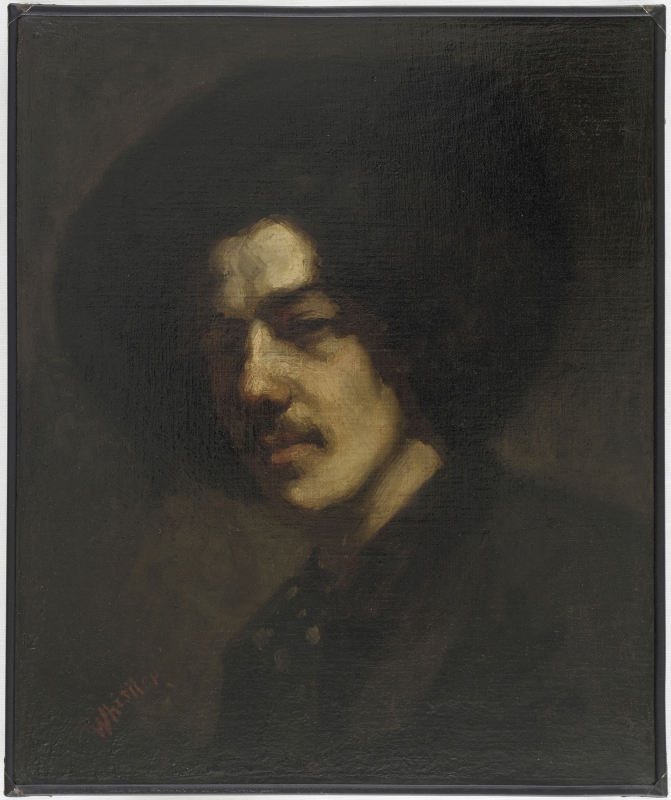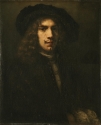Composition
The Pennells saw in it the influence of old masters in the Louvre, and Rembrandt Harmens van Rijn (1617-1681) in particular:
'The portraits "smell of the Louvre." The method is acquired from close knowledge of the Old Masters. "Rembrandtish" is the usual criticism passed on these early canvases, with their paint laid thickly on and their heavy shadows. Indeed, it is evident that the portrait of himself must have been done after long and careful study of Rembrandt's Young Man in the Louvre.' 1
Similarly, Théodore Duret (1838-1927) wrote that in this painting,
'On y découvre l'influence de Rembrandt, dont il était alors très épris. Il avait été particulièrement séduit par la tête de jeune homme de Rembrandt, au Louvre, avec le large béret et les longs cheveux ondulés, et il se plut à exécuter son propre portrait dans la même donnée.' 2
Duret may have had in mind the Portrait of a young man, now attributed to a follower or the studio of Rembrandt, and dated ca 1658, where the dramatically lit sitter wears a very large beret over long curly hair. 3
Technique
It was painted fairly thickly and consistently throughout, but there are traces of alterations, particularly to each side of Whistler's neck and shoulders. The size of the canvas corresponds with the French 'toile de 8' (46 x 38 cm) and it was probably acquired in Paris.
Conservation History
According to the Freer Gallery of Art conservation records, it has been extensively conserved over the years: relined (1922); 'Varnished and flattened' (1925); resurfaced (1931 and 1942); relined again, in 1951; and the old relining was removed and the painting cleaned, relined and varnished in 1965.
Last updated: 4th December 2020 by Margaret







